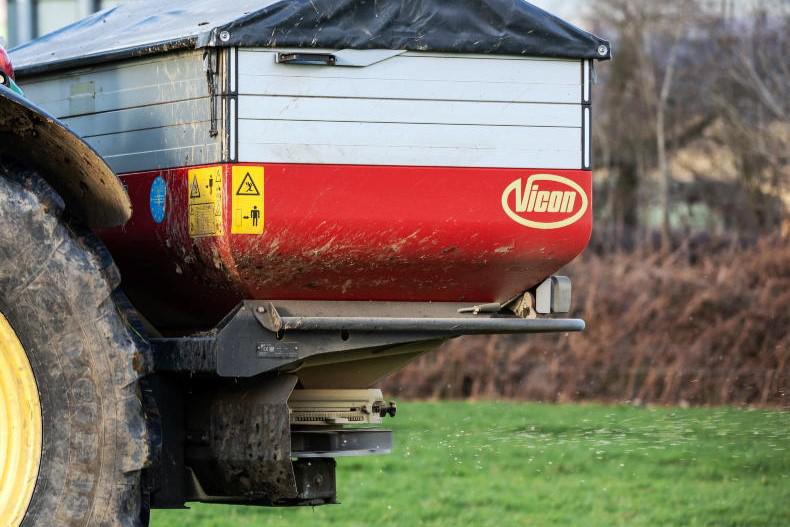Unprotected urea could be banned from September 2025 under radical plans agreed by an industry stakeholder group.
Only protected urea should be available to Irish farmers from next autumn, the Agricultural Water Quality Working Group is recommending.
The move represents a major shake-up of the fertiliser market, as unprotected urea still accounts for a major proportion of farmer fertiliser use.
Almost 80,000t of unprotected urea was purchased by farmers this year, with the same tonnage of protected urea sold. A further 40,000t of urea blended with sulphur or Ps and Ks was bought by farmers.
The minutes from a meeting of the working group held earlier this month stated that the “prohibition on the use of unprotected urea would apply from 15 September 2025”.
“For additional areas moving to a maximum derogation limit of 220kg N/ha this [prohibition] would apply from 1 December 2025,” the minutes added.
Moving farmers to exclusively using protected urea is a key climate change objective for Irish agriculture, as the treated product lowers ammonia losses to the atmosphere.
Recent reductions in total emissions from Irish agriculture have been attributed to an overall reduction in fertiliser use and a move towards protected urea.
However, shifting to protected urea has cost implications for farmers, as it is €40/t to €50/t more expensive than the traditional product.
Some merchants have also questioned the effectiveness of protected urea in dry weather, claiming there is a better response from the unprotected product.
Pure urea
Fertiliser industry sources maintained the ban may only apply to pure urea at 46% N.
They claimed that 38% urea and 29% blended with sulphur or P and K – which accounted for 30% of unprotected urea sales this spring – would be exempt from the measure.
The aim of the Agricultural Water Quality Working Group is to identify and commit to demonstrative actions that will facilitate the agricultural sector to contribute to improved water quality.
The stakeholder group includes the Department of Agriculture, the farm organisations, fertiliser industry, merchants, ICOS, Teagasc and the Agricultural Consultants Association.






 This is a subscriber-only article
This is a subscriber-only article










SHARING OPTIONS: